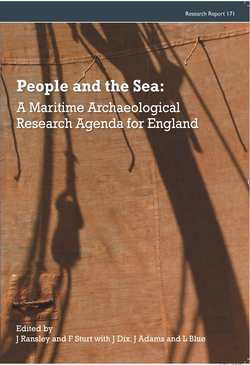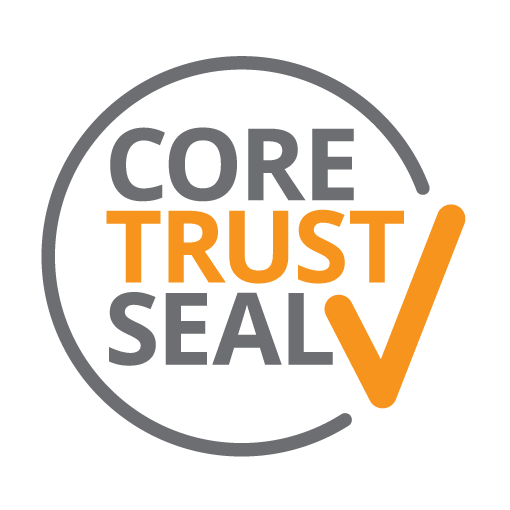Maritime and Marine Historic Environment Research Framework
Jonathan Adams, Geoff Bailey, Mark Beattie-Edwards, Martin Bell, Duncan Brown, Martin Carver, Virginia Dellino-Musgrave, Justin Dix, Joe Flatman, JD Hill, Christopher Loveluck, Jane Maddocks, David Parham, Jesse Ransley, Julie Satchell, Fraser Sturt, Robert Van de Noort, Michael Walsh, Graeme Warren, Kieran Westley, Steve Willis, 2011. (updated 2013) https://doi.org/10.5284/1000148. How to cite using this DOI
Data copyright © Dr Jonathan Adams, Prof Geoff Bailey, Mark Beattie-Edwards, Martin Bell, Duncan Brown, Prof Martin Carver, Dr Virginia Dellino-Musgrave, Dr Justin Dix, Dr Joe Flatman, Dr JD Hill, Prof Christopher Loveluck, Jane Maddocks, David Parham, Dr Jesse Ransley, Julie Satchell, Prof Fraser Sturt, Prof Robert Van de Noort, Dr Michael Walsh, Dr Graeme Warren, Kieran Westley, Dr Steve Willis unless otherwise stated
This work is licensed under the ADS Terms of Use and Access.
Primary contact
Dr
Jesse
Ransley
Centre for Maritime Archaeology
Faculty of Humanties
University of Southampton
Avenue Campus
Highfield
Southampton
SO17 1BJ
England
Tel: 023 80594439
Resource identifiers
- ADS Collection: 1043
- ALSF Project Number: 4716
- DOI:https://doi.org/10.5284/1000148
- How to cite using this DOI
Overview
Project overview
Over a period of 15 months more than 90 individuals contributed to 10, largely period-based, working groups and the production of a 400+ page report. This thorough report outlines the current state of our knowledge, identifies strengths to build upon and sets out key research questions and areas - the gaps in our knowledge - for future research projects to pursue.
As the first research review project to address the maritime and marine historic environment in this country, the project was complex. It required both sector-wide involvement and consultation and a considerable amount of new review and assessment work. It brought together a diverse group of specialists from a variety of fields and backgrounds in the academic, commercial, curatorial and voluntary sectors. All of whom gave significant amounts of time, as well as their expertise, voluntarily. These specialists met first for a two-day, working group workshop in July 2009 to map out the chapters each group would produce. These chapters were drafted in only seven months, after which the working drafts were circulated as part of an extensive public consultation process, which culminated in a one-day conference in May 2010 during which each group's results were presented. Finally, post-consultation, there was a last re-drafting stage. The considerable work put into the project by the individuals on the working groups, particularly the working group chairs, was pivotal to the development of the full report in such a short time, and without whom it would not have been possible to complete the project.
The final report is also the pre-publication draft of a comprehensive review, assessment and directions volume to be published in late 2011. The volume contains discussion of overarching questions central to research into the maritime and marine historic environment, concerning chronologies, marine geoarchaeology and investigative methodologies, archives and conservation. In addition is has nine period-specific chapters: Palaeolithic, Mesolithic, Neolithic and Early Bronze Age, Later Bronze Age and Pre-Roman Iron Age, Roman, Early Medieval, High to Post Medieval, Early Modern, and Modern (c. 1850-2000). Each of which address five key themes, which are consistent throughout the volume: coastal change, maritime settlement and marine exploitation, seafaring, maritime networks, maritime identities and perceptions of maritime space.
The final publication is an agenda-setting, wide-ranging examination of research into our maritime past, and as such will have relevance for the academe in England, UK and beyond, for archaeologists, historians, historical geographers and anthropologists, as well as for curators, museums practitioners, volunteers and the wider public.
Publication Overview
The Maritime Research Agenda was published in 2013:
J. Ransley and F. Sturt (eds.) 2013 People and the Sea: A Maritime Archaeological Research Agenda for England. Council for British Archaeology
This volume was developed from the work of the nine working groups involved in the ALSF-funded ‘Maritime and Marine Historic Environment Research Framework’ project and their original project report. The book has five appendices containing technical details and additional information gathered during both the original project and preparation of the publication. These support and compliment the discussion and research agenda outlined in the book, and are as follows:

- Introduction – Appendix: Maritime Archaeological Archives and Collection Issues.
- Palaeolithic chapter – Technical Appendix: Sea-level Change, Palaeo-Environmental Change and Preservation Issues.
- Palaeolithic chapter – Technical Appendix: The application of extensive 3D Seismic Reflection Data for the exploration of extensive inundated palaeolandscapes.
- Mesolithic Chapter – Technical Appendix: Site Formation and Geoarchaeology.
- Early Medieval Chapter – Appendix: Original ‘Early Medieval Period Working Group’ Resource Assessment and Research Agenda Document (2010).
- High to Post-Medieval Chapter – Appendix: Archaeological Remains of Vessels from Great Britain, Northern Ireland and Ireland 6th- 16th Centuries AD.






